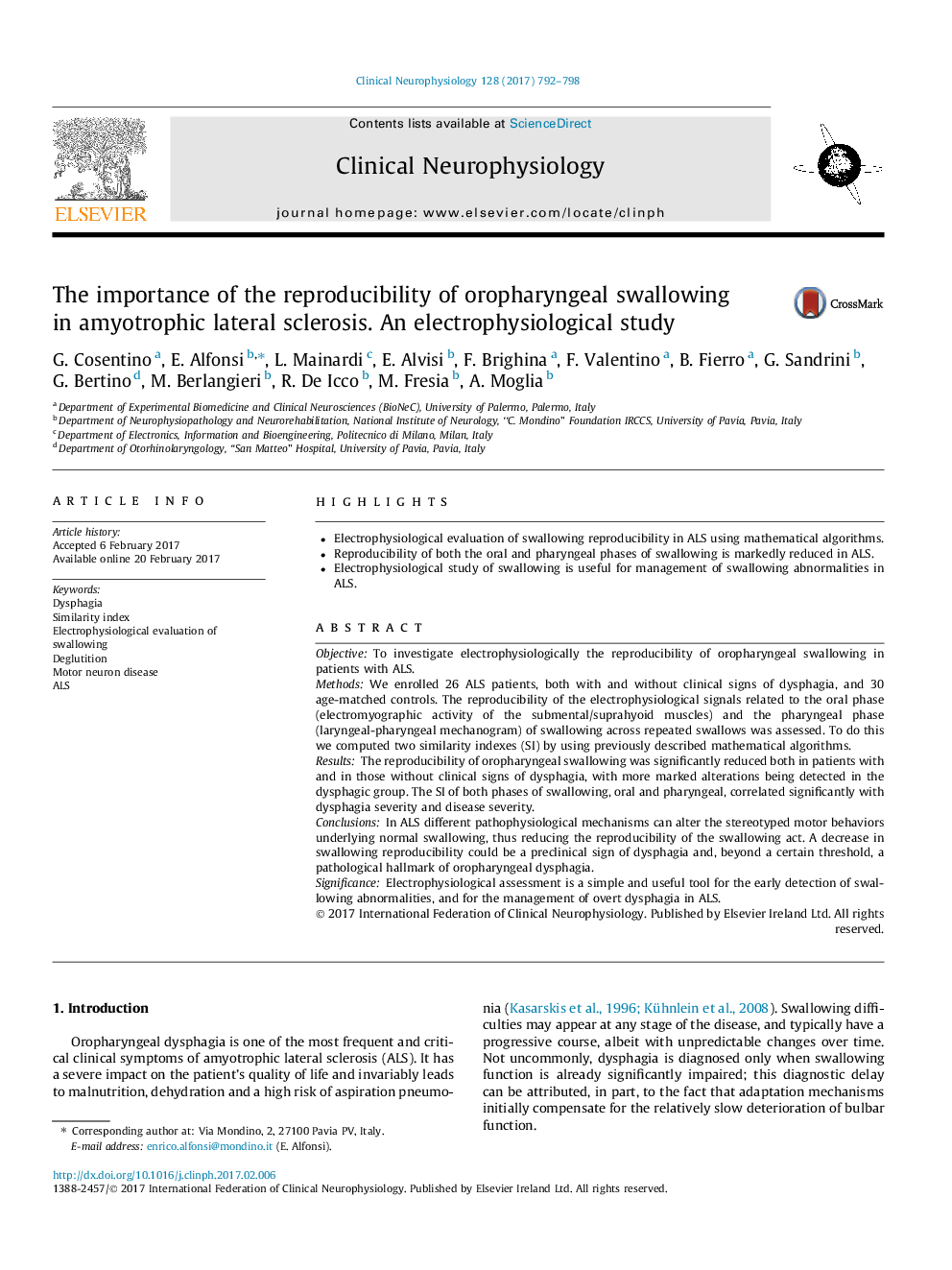| Article ID | Journal | Published Year | Pages | File Type |
|---|---|---|---|---|
| 5627675 | Clinical Neurophysiology | 2017 | 7 Pages |
â¢Electrophysiological evaluation of swallowing reproducibility in ALS using mathematical algorithms.â¢Reproducibility of both the oral and pharyngeal phases of swallowing is markedly reduced in ALS.â¢Electrophysiological study of swallowing is useful for management of swallowing abnormalities in ALS.
ObjectiveTo investigate electrophysiologically the reproducibility of oropharyngeal swallowing in patients with ALS.MethodsWe enrolled 26 ALS patients, both with and without clinical signs of dysphagia, and 30 age-matched controls. The reproducibility of the electrophysiological signals related to the oral phase (electromyographic activity of the submental/suprahyoid muscles) and the pharyngeal phase (laryngeal-pharyngeal mechanogram) of swallowing across repeated swallows was assessed. To do this we computed two similarity indexes (SI) by using previously described mathematical algorithms.ResultsThe reproducibility of oropharyngeal swallowing was significantly reduced both in patients with and in those without clinical signs of dysphagia, with more marked alterations being detected in the dysphagic group. The SI of both phases of swallowing, oral and pharyngeal, correlated significantly with dysphagia severity and disease severity.ConclusionsIn ALS different pathophysiological mechanisms can alter the stereotyped motor behaviors underlying normal swallowing, thus reducing the reproducibility of the swallowing act. A decrease in swallowing reproducibility could be a preclinical sign of dysphagia and, beyond a certain threshold, a pathological hallmark of oropharyngeal dysphagia.SignificanceElectrophysiological assessment is a simple and useful tool for the early detection of swallowing abnormalities, and for the management of overt dysphagia in ALS.
